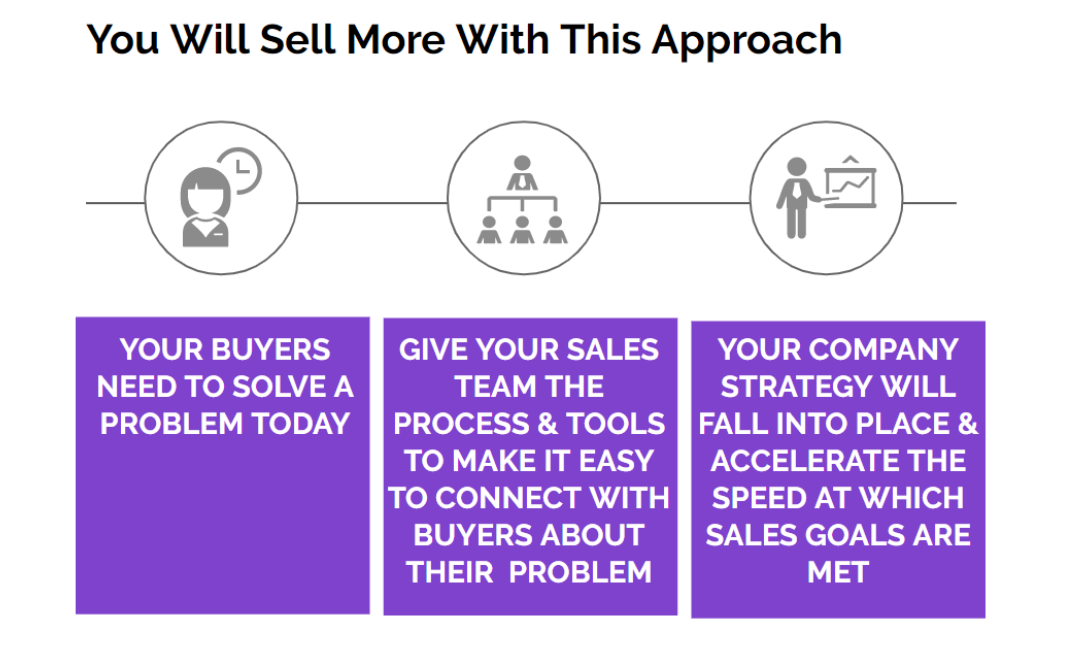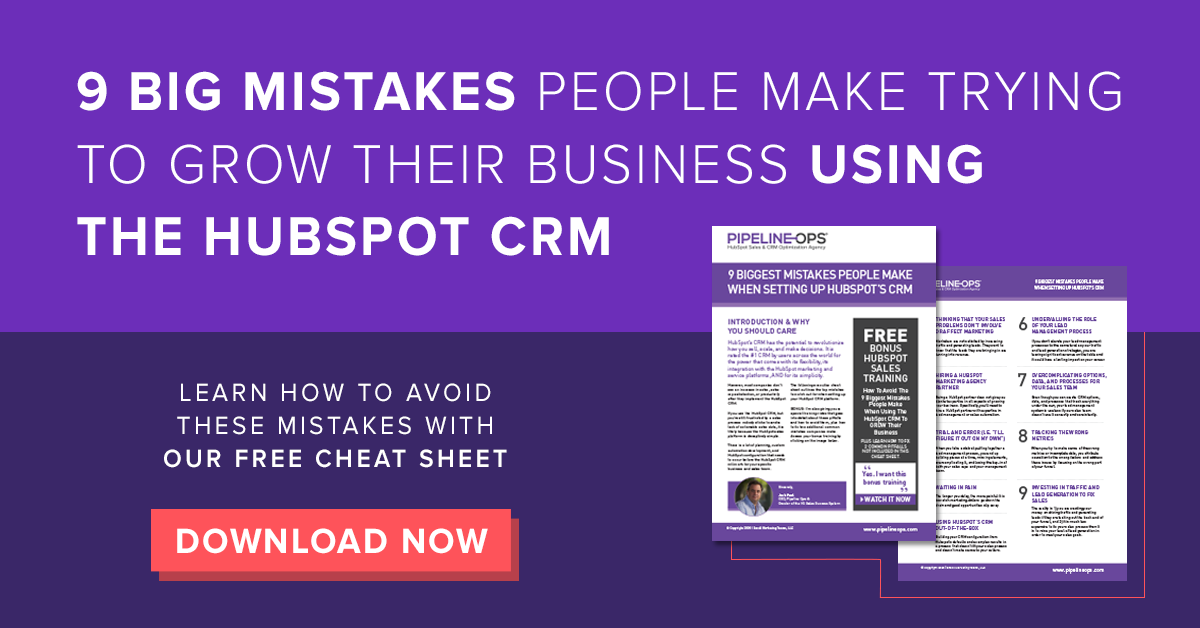In the past decade, the sales playing field has changed dramatically. What may have worked for sales reps before is now insufficient.
In the recent past, a bright charisma, creativity, and improvisation drove the majority of sales. Then, authenticity ruled the day. Most recently, social proof and trust-building are essential for brands.
While all of these are still valued today, these approaches alone just don’t cut it.

To be a successful sales rep in our fast-paced environment, experts need powerful processes and targeted technology.
In the following guide, I’ll explain how to leverage sales enablement at your company to give your sellers a solid foundation to compete in today’s market.
- How Buying and Selling Has Evolved
- What is Sales Enablement?
- A Brief History of Sales Enablement
- Examples of Sales Enablement Today
- Implementing Sales Enablement
Keeping up With How Buying and Selling Has Evolved
Buyer mindsets have changed in the past ten years. With advances in technology, the modern customer is far more educated and demanding now than ever before. For example, 88% of buyers pre-research products online. Meanwhile, more than 55% of them read online reviews before heading to the store. Modern sales interactions can feel like this:
Salesperson: "I'll only take five minutes of your time."
Prospect: "Sorry, Googling takes less."
When the sales rep approaches the customer, it is highly likely they have already Googled the product specs, the pros and cons of buying it, and the reason why 2 out of 10 buyers hate it.
The old way of enticing a customer with sugar-coated information simply doesn't work anymore. The same can be said for the B2B environment where buyers are constantly inundated with options, education, and reviews.
Helping Sales Reps Serve Buyers
In the 21st century, to make an impression and provide value to the consumer, the rep should be an industry, product, and buyer persona expert. This level of expertise requires having extensive knowledge about product specs, new features and functionalities, customer behavior, pain points, preferences, and much more.
They also need to know where each prospect is in the buying process and treat them as such.
To effectively lure the ideal customer in, modern sales reps would need to spend two-thirds of their time doing research and planning instead of building customer relationships and landing deals.
Sales reps are constantly flooded with information from internal and outside sources, making these demands more challenging. Having someone do necessary research on their behalf or bringing in a streamlined sales tool that feeds sales reps just-in-time information, optimizes the traditional current sales process and enables reps to provide relevant resources and messages to buyers at every stage of the sales cycle.
Sales Reps Have Access to Mountains of Data
While some aspects of modern sales enablement have existed for decades, the amount and quality of the data sales reps now have access to presents a new challenge. From information about real time engagement with your sales materials to tools that give sales reps insight about a prospect's intent to buy, getting the right message in front of the right person at the right time can be complicated. Information overload hurts sales team productivity.
It is important to regulate the information flow to sales reps and set up systems that manage how data reaches sales teams without taking them outside their daily task flows.
What is Sales Enablement?
How quickly can you start a fire using flint and steel? What if someone would give you a match? See the difference? The same shift works for your sales team. With the right tools, information, and processes, they can more easily and consistently achieve top results.
Andy Paul, from the Sales Enablement Podcast with Andy Paul, defines sales enablement as “anything that enables reps to have knowledge-based conversations with their customers that customers feel are valuable.”
Here are two must-hear interviews on effective sales enablement strategies from our Modern Sales Management podcast:
- Sales Enablement in 2021: The #1 Skill Every Salesperson Needs With Andy Paul
- How Sales Enablement Can Be Most Impactful With Andrew Quinn
A lot of emphasis is put on sales technology, but managing a sales team is still all about people (the humans you call your sales reps). I’ve always said that sales enablement should be thought of as “salesperson enablement.” And a salesperson and sales team ultimately need to be set up to succeed.
Sales enablement involves providing your salespeople with tools and processes to do their work more effectively. These tools include content, technology, knowledge, training, and information.
Why Context, Timing, and Sales/Marketing Alignment Matter in Sales Enablement
Having the right tools and content isn’t the only factor setting you up for success. Getting the information to your buyers in a timely manner is equally important. A combination of the right content delivered to the right target at the exact right time will yield consistent results.
The enablement strategy focuses on the buyer by providing sales teams with accurate data and well-curated resources needed to engage the target audience. This strategy requires both sales and marketing experts to align and work closely together.
Collaboration plays an integral role in building the sales enablement strategy by exchanging information, experience, and sharing critical feedback in the process. These teams need to align and remember they both have the same ultimate goal: to drive revenue.
There are many valuable sales enablement tools coming to market every week, but chasing shiny objects is a recipe for confusing sales reps and losing internal buy-in. It’s best to avoid getting caught up in the technological side of things.
You can definitely utilize technologies to your advantage, but be strategic and keep it simple. To wrap your head around sales enablement and advocate for your strategy within your company, think of it as “salesperson engagement.”
FREE SALES PRODUCTIVITY CALCULATOR: How Much Will Your Revenue Increase if Your Sales Reps Can Spend More Time Selling?
A Brief History of Sales Enablement
Although sales enablement has risen to stardom in the 21st century and is becoming increasingly popular, its roots go way back.
- 1930s — Distributing written unified sales advice for representatives (Dale Carnegie's sales training books)
- 1940s — Using available technology to enhance travel for sales reps and their ability to sell at scale
- 1980s — Creating and using sales methodologies (Solution selling, SPIN selling)
- 1990s — Using new digital technologies to communicate and educate buyers (internet)
- 2000s — Taking full advantage of data recording, tracking and storage technologies, emphasis placed on inbound marketing and leveraging social media platforms
- 2010s — Creating a scientific approach to selling and taking advantage of analytics tools to build sales and marketing campaigns
- 2020s — Making data and enablement an integral part of the sales and marketing strategy
Examples of Sales Enablement Today
How does sales enablement work today? The strategy depends on people, training, and technology and is unique to each company and sales team.
The People and Culture Aspect of Sales Enablement
Implementing the culture of sales enablement into the operations of your company is vital to its success. Since sales are the lifeblood of your business, all departments should be contributing in the following ways:
- Creating content
- Providing and discussing sales insights
- Sharing information related to consumers and strategies
- Maintaining consistency
- Evaluating, testing, reporting, and adjusting
Enablement shouldn't be a single component of your sales strategy. It must be a culture your company lives by, which is why it’s important to get complete buy-in from all parties.
Another important part of sales enablement culture is the structure to freedom ratio. Give your team a process and a structure, but also give them freedom to experiment on the path to success.
The Process, Training, and Adoption Aspect of Sales Enablement
Providing your sales team with sufficient materials for training and onboarding is essential to the enablement culture. Regularly training and coaching reps on the internal processes of the company is critical to the success of the team.
It’s also important to spend time training sales managers themselves, so they can better coach and train their sales reps to deliver results. Here are just a few ways to enable your sales team:
- Create buyer personas to understand the customer's needs (behaviors that drive purchasing decisions).
- Arrange product sales training to learn the necessary talking points and product/service details.
- Educate reps about the sales process and overall business operations for quicker onboarding.
- Keep sales teams informed about changes in the sales process and goals.
- Involve sales teams when making adjustments to the sales processes and goals.
- Listen to the sales team's insights and implement their suggestions.
- Encourage sales teams to report and implement what they've learned.
- Allow flexibility for testing and experimentation, don’t be afraid to try new things.
The Technology and Productivity Aspect of Sales Enablement
According to HubSpot, sales reps spend 17% of the day entering data, 17% prospecting and researching leads, 21% writing emails, 12% participating in internal meetings, and 12% scheduling calls. That leaves only 21% of their day left for selling.
Adopting the right tools allows sales teams to cut time spent on manual and repetitive tasks and increase the time spent on selling and closing deals. Here are a few tools that may help your team minimize their daily time consuming tasks:
- Sales content management tools — find, organize, and promote sales assets
- Video coaching and practice tools — reinforce sales training efforts
- Sales engagement platforms — manage, measure, and optimize the way reps interact with buyers
- Sales intelligence tools — find and track contextual insights into the customer's actions
- Customer relationship management (CRM) tools — organize and optimize customer relationships and interactions, measure customer data and sales results
Taking full advantage of the available technologies isn't only beneficial for optimizing your sales process. You need these sales enablement technologies to keep you competitive in your niche. They help keep you organized, informed, and allow you to work quickly and efficiently.
 Remember, other companies are already optimizing their sales force.
Remember, other companies are already optimizing their sales force.
Implementing Sales Enablement in Your Organization
Fitting the sales enablement strategy in your organization requires serious planning and involvement from many stakeholders. Here is a high-level outline of what the implementation process may look like.
- Setting SMART goals — "more sales" isn't good enough. Try "increasing the time sales spends on building customer relationships and driving sales by 15%."
- Discussing sales enablement with sales teams — get insight into what could help your sales reps achieve their goals.
- Understanding the customer — work with the marketing team to get information about buyer personas and behaviors.
- Beefing up content — create and adjust the content sales reps needs to achieve better sales.
- Organizing training — prepare training materials to educate reps about products, cooperate with marketing teams, manage projects, use tools, and more.
- Providing technology — gather the necessary tools and technologies to help sales reps track and communicate with customers.
- Create seller-centric processes — Run every decision, process change, and new technology through the lens of “will this be easy enough for my sales reps to understand and use without slowing down their sales activities?”
Sales Enablement Takeaway
Since the behavior of buyers has changed dramatically, companies need to adjust their sales approach to keep up and continue to bring in sales. A sales enablement strategy is an integral part of your business' success.
The goal is to use the power of knowledge and technology to back your sales rep's expertise and optimize the buyer’s decision making process, ultimately resulting in greater sales success.


